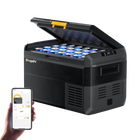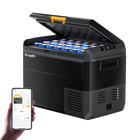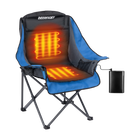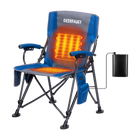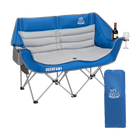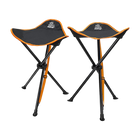How do CIGS solar panels work?
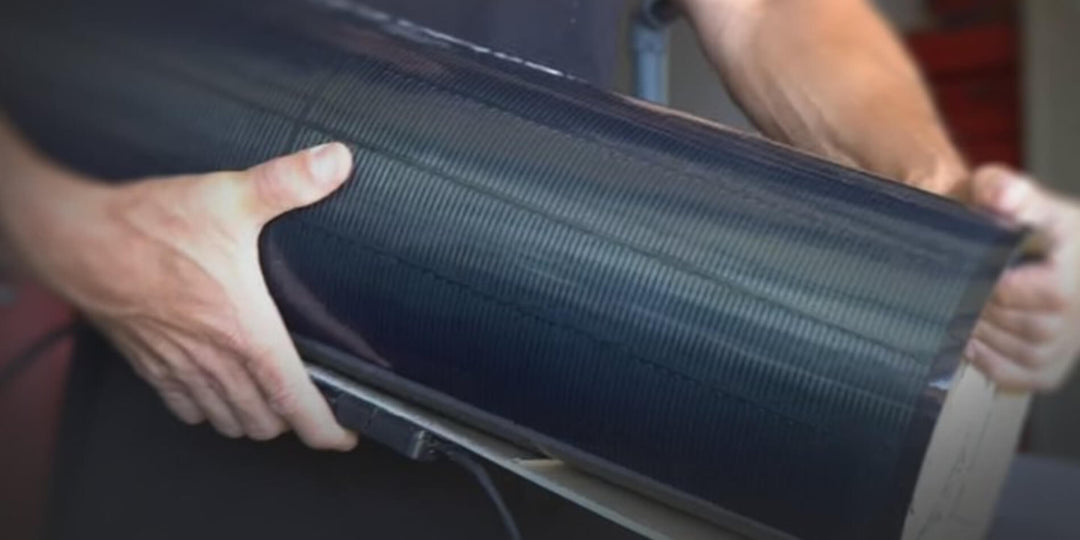
In recent years, the world has seen a substantial increase in energy demand, especially as the population touched new heights. The world is searching for renewable energy sources and one energy source is solar. Among solar, thin film solar panel has emerged as one of the most affordable technologies for generating solar power.
Thin film solar cells, also known as TFS are a type of solar cell, which is made up of thin layers of photovoltaic materials deposited on glass and plastic substrates. They are made in a very popular flexible shape and their multiple light-absorbing layers can be a hundred times smaller than a traditional silicon solar panel so they offer a super lightweight and portable design. In comparison with traditional solar panels, thin film solar panel is more flexible and cheaper. CIGS solar panel is the best of these thin film flexible panels, which would be discussed later in the article along with the working.
- Types of Thin film or Flexible solar panels
- Construction and Working of CIGS solar modules
- Advantages of CIGS solar panels
- Disadvantages of CIGS solar panels
- Applications of CIGS solar panels
- Summary
- Why BougeRV is your one-stop solution for solar?
- FAQ

Types of Thin film or Flexible solar panels
· Amorphous Silicon (a-Si)
The new thin film flexible solar panels have a special kind of thin film material called amorphous silicon. It's not quite as good as traditional crystalline silicon solar panels. It only produces a small amount of power hence less efficient and best suited for small-scale applications. Combining multiple layers can result in higher efficiency of 6% to 8%. Less material is used in manufacturing than other PV panels but toxic materials are part of its manufacturing which are obviously harmful to nature.
· Cadmium Telluride (CdTe)
CdTe thin film solar panels are lightweight and next-level efficient. The technology is more flexible than standard solar panels. CdTe is made of cadmium telluride, a material that absorbs more energy from the sun and converts it into electricity. Cadmium telluride solar cells are more efficient (up to 18%) than any other type of thin film solar cell. They also have the highest conversion rate of energy. So when you see them and observe their performance, you'll understand why they've been called the most promising alternative to silicon solar cells.
· Gallium Arsenide (GaAs) Thin-Film Panels
There are a few types of thin-film solar cells on the market, and each has its advantages and disadvantages. Today, the best thin film panels use Gallium Arsenide (GaAs) as their active material. This material is extremely efficient, but its price is the major constraint for use in the house or on a commercial level. However, if you consider the efficiency and energy generation ability of these amazing modules and the lifetime of the panels, the new GaAs panels offer great value. They're considered the most efficient ones with an incredible efficiency of up to 28.8 percent in proper sunlight.
· Copper Indium Gallium Selenide (CIGS) -flexible and cost-effective
The most flexible, slim, and budget-friendly thin-film solar panel ever made is copper indium gallium selenide (CIGS). CIGS is a type of thin film solar panel that is only a few micrometers (µm) thick. Copper indium gallium selenide substrate holds less toxicity than CdTe PV modules so they are best for the environment too.
CIGS is a type of thin film solar cell technology that has been around for a few decades, but it’s only recently seen significant growth. CIGS cells are made of thin layers of copper indium gallium selenide (CIGS) that offer good efficiency, high absorption, tandem design, and durability. High-quality commercial CIGS solar modules have efficiencies between 10% and 14%. And BougeRV’s CIGS solar panel can reach 16%, which is a breakthrough in CIGS solar panels.
Construction and Working of CIGS solar modules
A common PV cell absorbs sunlight and converts the energy into electricity by the working of electrons and holes, which can be used directly to power electronic devices. In the case of CIGS solar panels, Copper indium gallium selenide (CIGS) is used to create the P-dopped layer that is fabricated above the electrodes for connection and after the chemical-bath deposition process, the CdS n-doped buffer layer is created for further process. Then P-n heterojunction is merged to create the absorber layer that captures sunlight.
When light hits the cell's surface it passes through the transparent front layer and absorbs into the CIGS layer which allows electron-hole pair formation. The p- and n-type materials of the cadmium-doped surface of the cell form a depletion region that plays a role in electrons separation from holes ultimately resulting in energy generation.
Advantages of CIGS solar panels
Super flexible and lightweight-best suitable for outdoor
CIGS solar panels are super light. They are thin and flexible. The panels can be bent and twisted to fit any shape. And usually, they don't need a frame like traditional solar panels.
The CIGS panels can be folded and wrapped for any outdoor activity or an RV trip along the riverside. A 100W Flexible Solar Panel by BougeRV has strong potential to charge your mobile devices, laptop, or mini electronic gadgets abandoned outdoors, without a utility supply.
More environmentally friendly due to a lower percentage of cadmium
The new CIGS (cadmium indium gallium selenide) solar panels are more environmentally-friendly than the Cadmium Telluride (CdTe) panels because they use less cadmium. And because cadmium is a very toxic material, using less cadmium is better for the environment and climate change.
High absorption of sunlight
The new CIGS solar panel absorbs maximum sunlight that falls on it due to the bandgap material used. That means the panel will produce more power than any other type of thin film. These features make the CIGS solar panels an ideal choice for commercial applications and areas with plenty of sunlight.
Best Protective buffer layer:
Inside the panel, grain boundaries form an inherent buffer layer, which prevents surface recombination and allows maximum protection for use in harsh conditions.
Disadvantages of CIGS solar panels
- CIGS panels are not very cheap, a high price tag is attached to them.
- A larger area, possibly up to 50% more is needed to accommodate more thin-film solar panels according to the project size.
- It's a truth that CIGS panels are not as efficient as crystalline silicon PV cells.
Applications of CIGS solar panels
· Rooftop solutions and Solar shingle tiles
With the introduction of CIGS solar panel technology, we can now use rooftop solutions for electricity generation and solar shingle tiles for building applications. The roof could be covered with photovoltaic CIGS shingles which improve your roof aesthetics too.
· Commercial or utility-scale installations
Applications of CIGS solar panels are many. They are used in commercial installations and utility-scale installations. They're also more durable and deliver a handsome power out, which makes them ideal for large-scale installations worldwide.
· Windows and Building Integrated Photovoltaics
The solar energy revolution has already begun, and CIGS solar panels are now used in everything from portable gadgets to Building integrated photovoltaics (BIPV) powering your building with a cleaner greener sources of electricity.
· Portable applications for outdoor
It’s time to start thinking about portable uses. Take a look at what you can do with these amazing panels. If you're looking to power a laptop, cellphone, or a mini gadget, you might think to get a solar panel that's as big as a wall but luckily CIGS panels work perfectly for all your outdoor needs.
Summary
The sun's energy is free and abundant. It has been a source of power for mankind for centuries and it is the exact time to use it as much as we can. Using flexible CIGS solar panels, we could reap unlimited benefits of renewable energy from being able to occupy it for home, outdoor, boating, and RV trips by reducing the cost of electricity, to help protect the environment by making more efficient use of energy. The flexible and sleek design of CIGS panels has become the choice of millions of people across the United States and Worldwide in a very short time.
Why BougeRV is your one-stop solution for solar?
BougeRV has decided to offer a top-of-the-line solar panel system for its customers. One that's going to help you save money on electricity while providing highly efficient PV panels and flexible solar panels like slim and flexible CIGS modules for home or outdoor use at an affordable rate.
At BougeRV we believe- customers’ pain is our pain and their leisure is ours. We provide the best quality solar equipment which never lets you go out of power anywhere.
FAQ
1. Is the CIGS panels’ technology the best among all thin film solar panels?
CIGS panels are very reliable, efficient and the best for residential and commercial use. They are the best among all thin-film modules in terms of less toxic cadmium and high performance.
2. Why should I choose BougeRV CIGS Flexible Solar Panels?
BougerV CIGS flexible solar panels are the most popular and best-selling type. We offer a most cost-effective solution than others in the market.
3. How much energy can be generated by CIGS panels?
It depends on the size/rating of the panel, the number of panels, the efficiency of the panel, and the temperature of the solar cell. CIGS solar cells are very efficient and provide energy as per rated power.
4. Are CIGS panels weatherproof?
Yes. They are manufactured with a special coating of ETFE to protect them from rain and snow. Our modules are IP68 waterproof with improved rainfall drainage to minimize the partial shade that hinders the performance of panels.




































